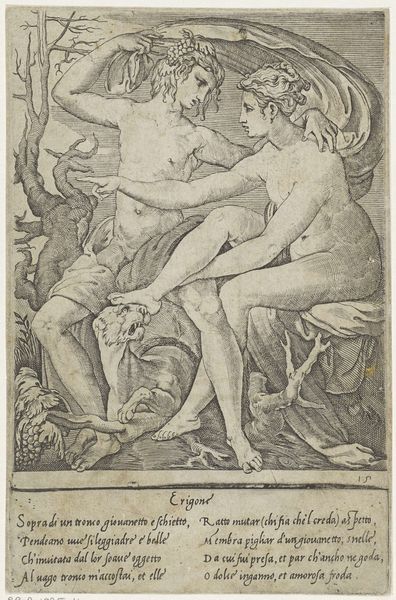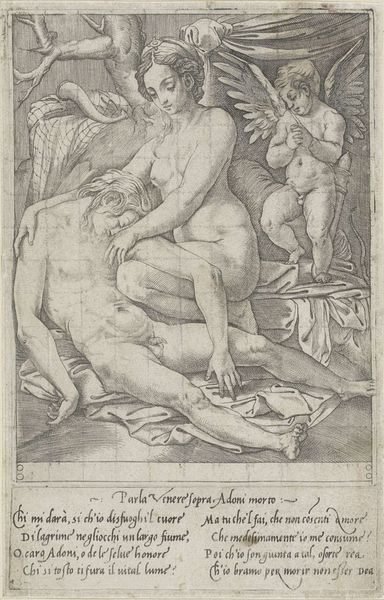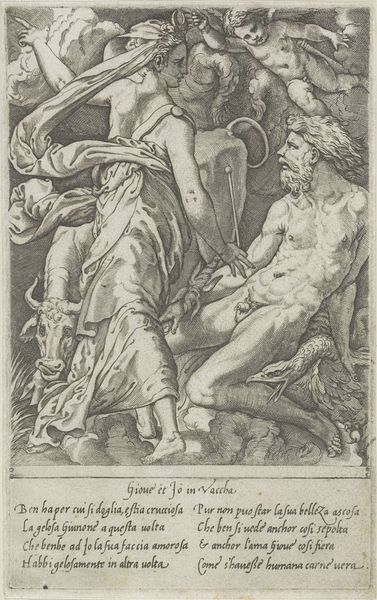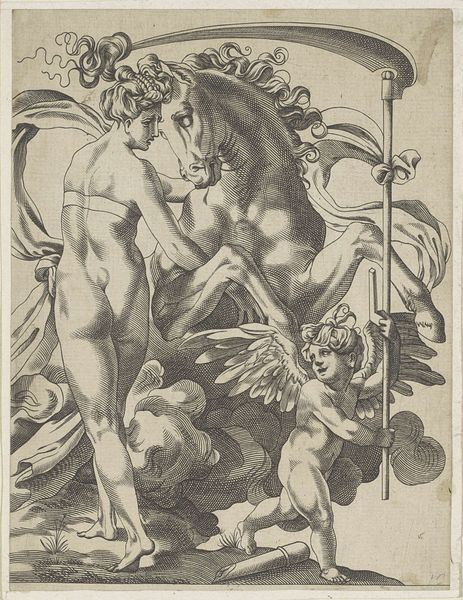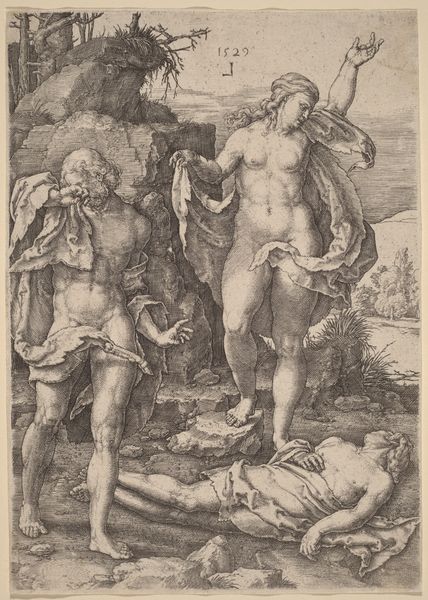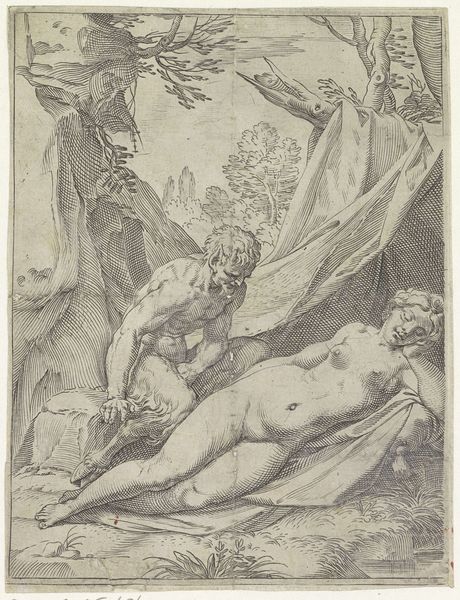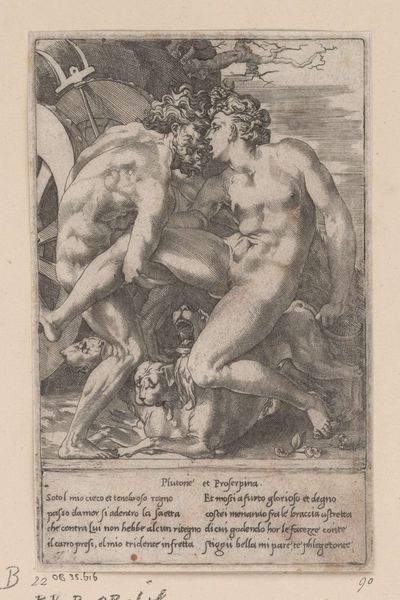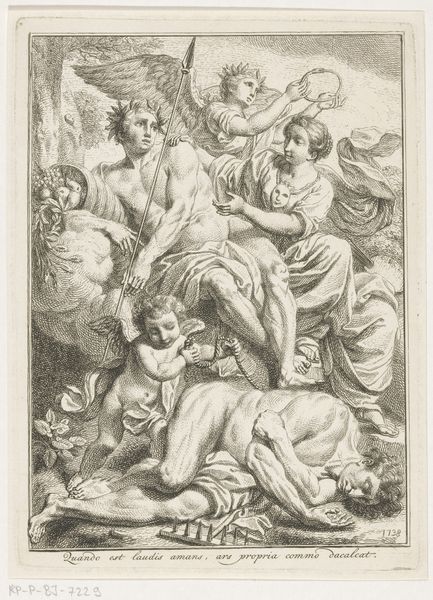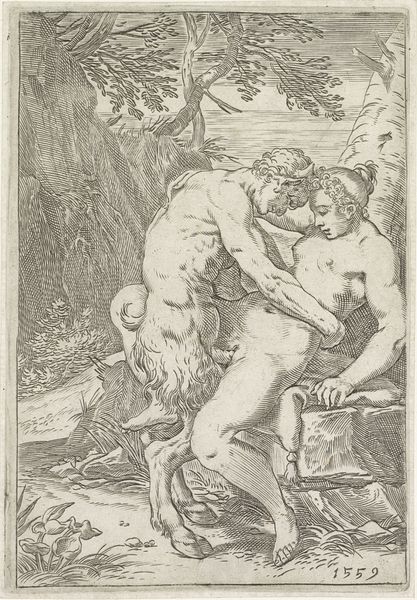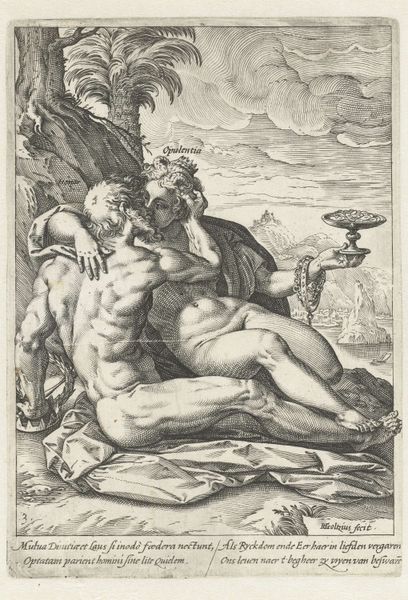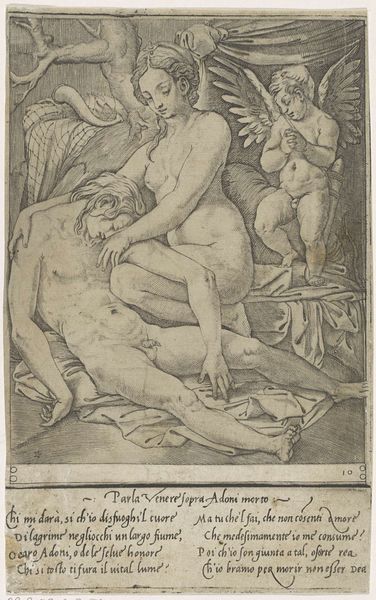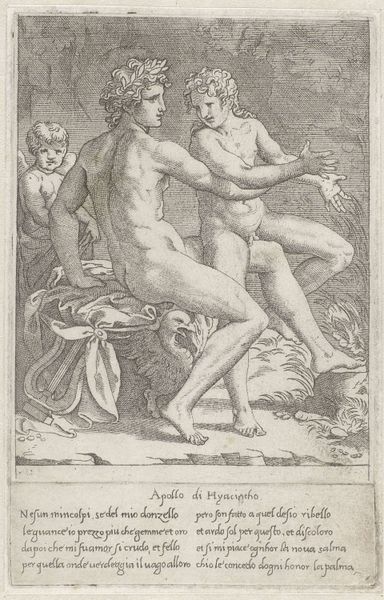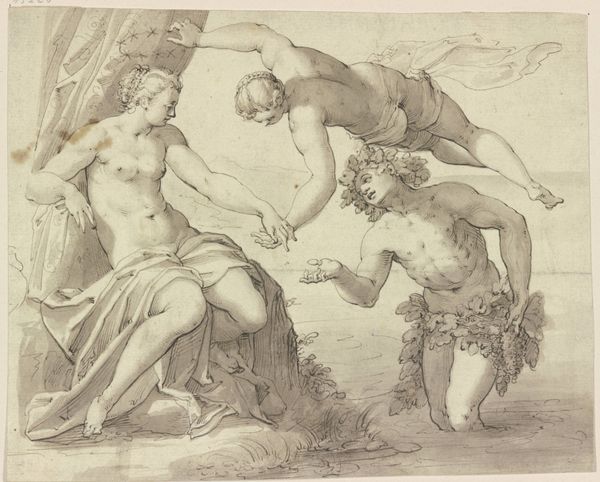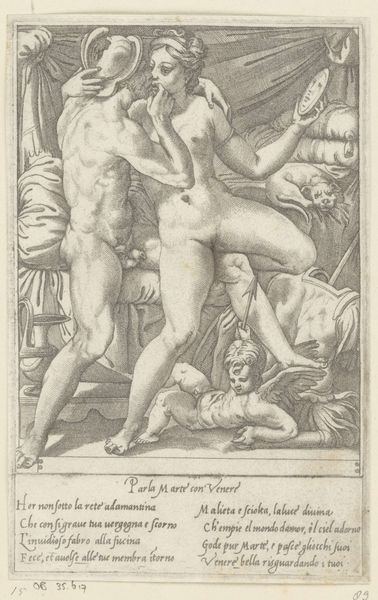
#
light pencil work
#
pencil sketch
#
old engraving style
#
personal sketchbook
#
sketchwork
#
pen-ink sketch
#
pen work
#
sketchbook drawing
#
pencil work
#
sketchbook art
Dimensions: height 214 mm, width 135 mm
Copyright: Rijks Museum: Open Domain
This engraving, Loves of the Gods, was created by Giovanni Jacopo Caraglio around 1500. Immediately, the dynamism of the composition pulls the eye, structured by complex forms and symbolic relationships, all rendered in meticulous detail. Caraglio uses the linear quality of the engraving technique to define shape and texture, creating a visual language that is both descriptive and allegorical. Notice how the figures—the nude woman, the horse, and the cupid—are intertwined. This entanglement might suggest a convergence of beauty, power, and desire, central themes in Renaissance art and philosophy. The forms destabilize traditional interpretations through metamorphosis and transformation. The engraving operates as a semiotic system, where each element is a signifier. For example, the horse can represent untamed passion, while the cupid symbolizes love. Together, they suggest a complex narrative. Consider how Caraglio’s formal choices reflect broader cultural and philosophical concerns about the nature of love, beauty, and transformation. This piece invites ongoing interpretations, as the artwork functions as a site of continuous re-evaluation.
Comments
No comments
Be the first to comment and join the conversation on the ultimate creative platform.
